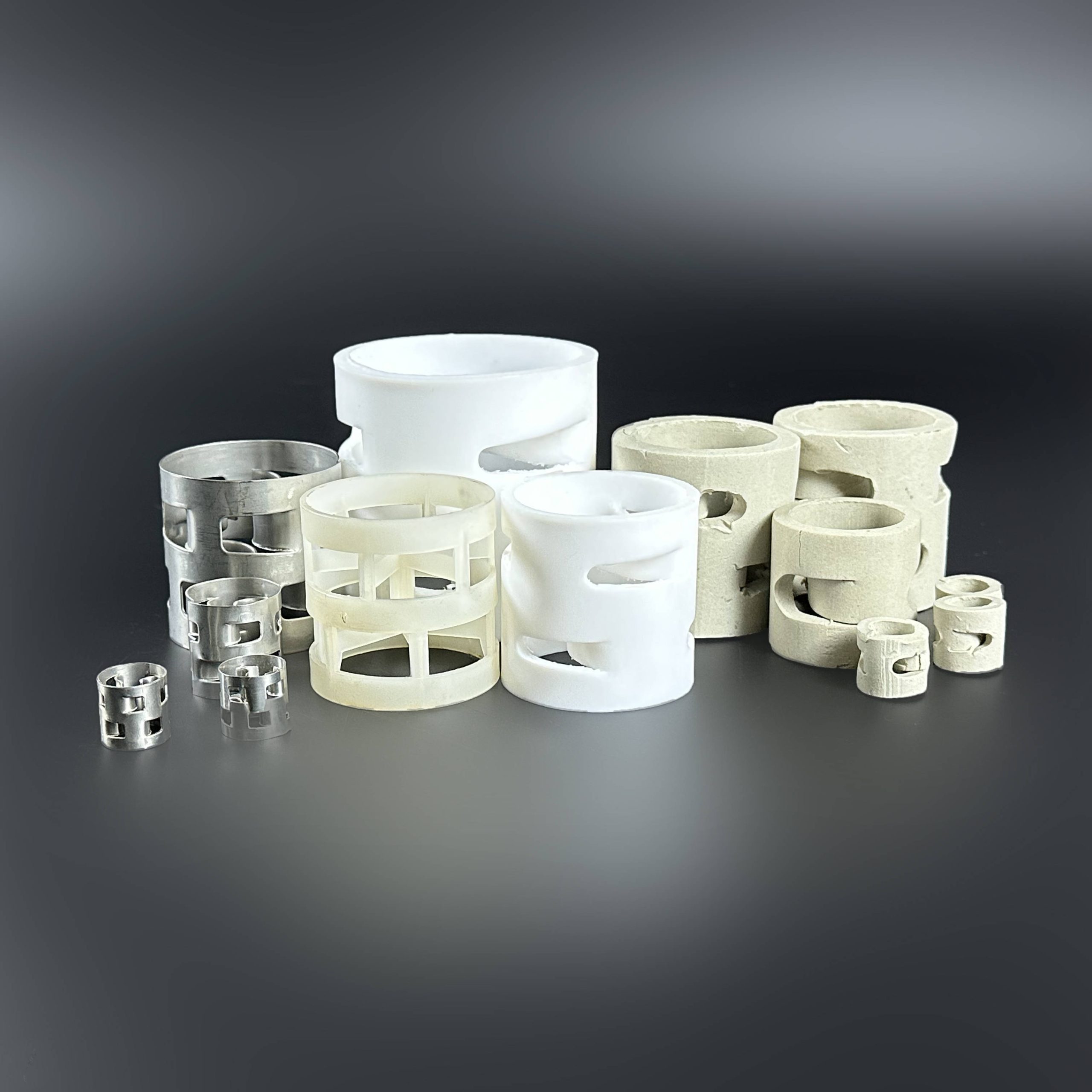Choosing the right material for Pall rings involves considering several factors:
- Chemical Compatibility: Ensure the material is resistant to the chemicals you’ll be using. Common materials include:
- Stainless Steel: Good for most applications.
- Plastic (e.g., PVC, PP): Suitable for corrosive environments.
- Ceramic: Ideal for high-temperature or aggressive chemicals.
- Temperature Resistance: Assess the operational temperature range. Certain materials like plastics may degrade at high temperatures, while metals and ceramics can withstand more.
- Mechanical Strength: Depending on the application, consider the strength needed to handle pressure and stress.
- Cost: Balance between performance and budget. While metals may provide better durability, plastics can be more cost-effective for less demanding applications.
- Application Specifics: Consider factors such as the type of fluid being processed, flow rates, and desired mass transfer efficiency.
- Regulatory Compliance: Ensure the chosen material meets industry standards and regulations relevant to your application.
By evaluating these factors, you can select the most suitable material for your Pall rings.
